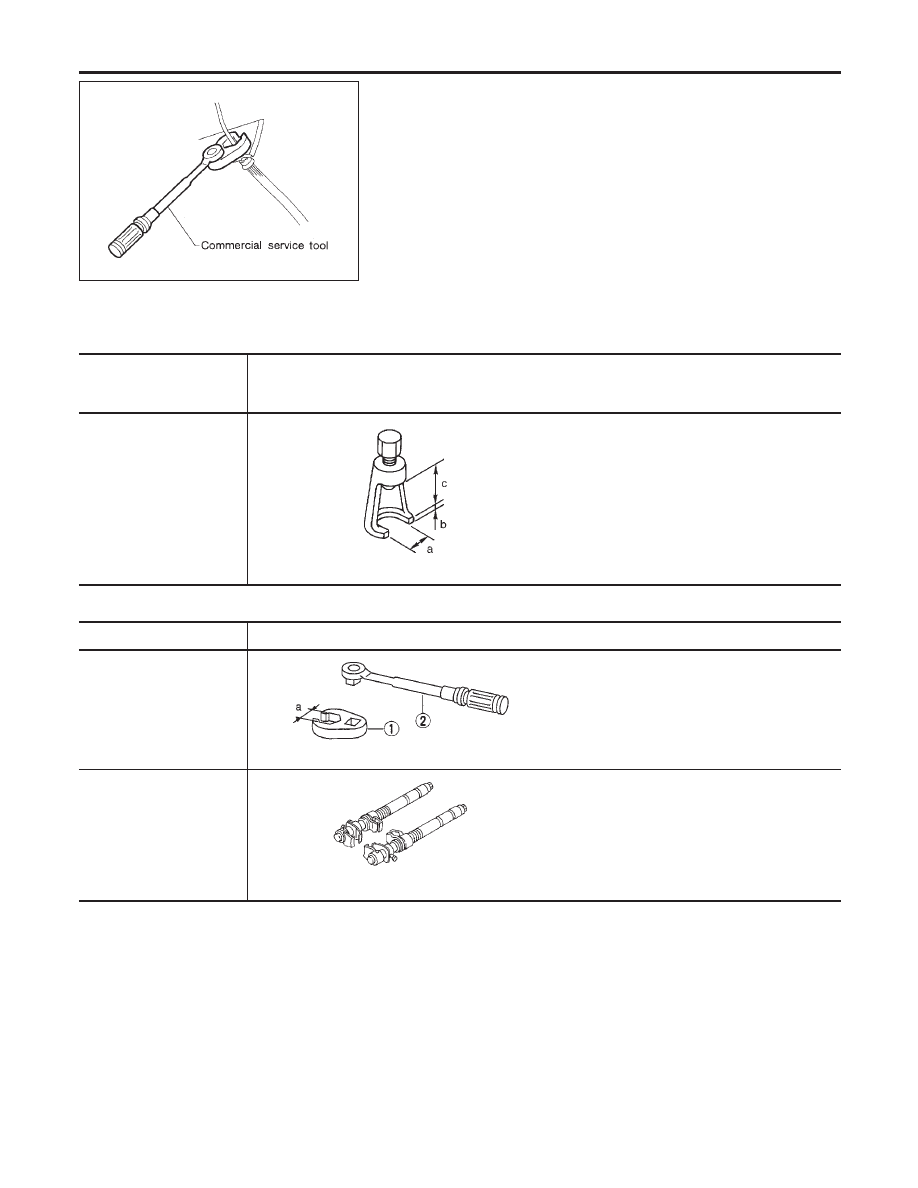Infiniti QX4 (R50). Manual - part 555

SBR686C
Precautions
PRECAUTIONS
NBSU0001
I
When installing rubber parts, final tightening must be car-
ried out under unladen condition* with tires on ground.
*Fuel, radiator coolant and engine oil full. Spare tire, jack,
hand tools and mats in designated positions.
I
Use flare nut wrench when removing and installing brake
tubes.
I
After installing removed suspension parts, check wheel
alignment and adjust if necessary.
I
Always torque brake lines when installing.
Preparation
SPECIAL SERVICE TOOLS
NBSU0002
The actual shapes of Kent-Moore tools may differ from those of special service tools illustrated here.
Tool number
(Kent-Moore No.)
Tool name
Description
ST29020001
(J24319-01)
Ball joint remover
NT694
Removing tie-rod outer end and lower ball joint
a: 34 mm (1.34 in)
b: 6.5 mm (0.256 in)
c: 61.5 mm (2.421 in)
COMMERCIAL SERVICE TOOLS
NBSU0003
Tool name
Description
1 Flare nut crowfoot
2 Torque wrench
NT360
Removing and installing each brake piping
a: 10 mm (0.39 in)
Spring compressor
NT717
Removing and installing coil spring
FRONT SUSPENSION
Precautions
SU-2